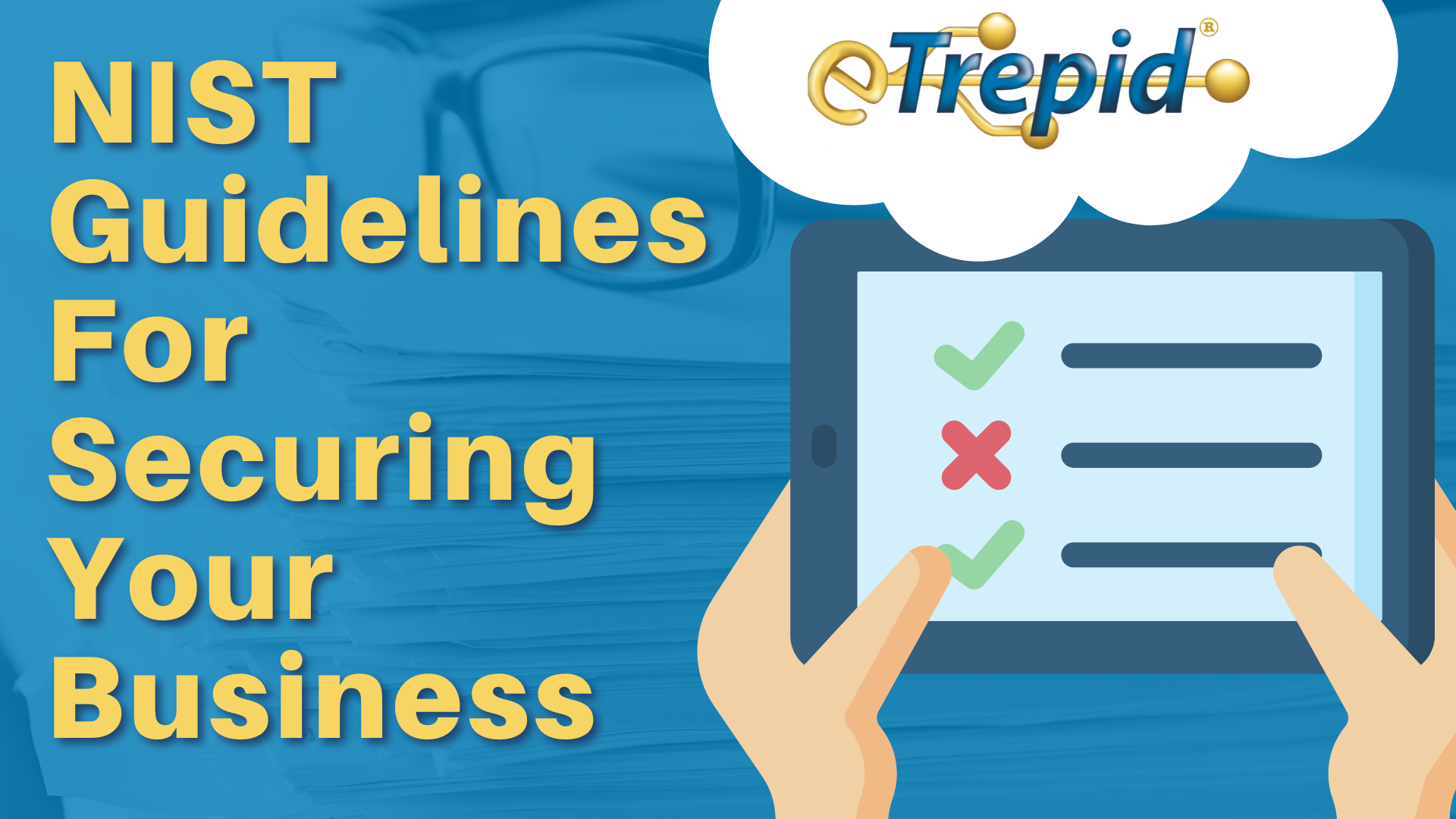NIST Guidelines For Securing Your Business
Global cybercrime is expected to cost $10.5 trillion by 2025 as it becomes the most significant transfer of economic wealth the world has ever seen.
No matter where you look, cyber threats are on the rise and costing businesses billions of dollars per year. In fact, annual costs surpass the damage inflicted by natural disasters every year and will be more profitable to cybercriminals than the sale of all major illegal drugs worldwide.

Hackers routinely target government entities, businesses, hospitals, and other unsuspecting organizations with ransomware and phishing, but that's not the only kind of cyber attack to worry about.
- Brute force: Using trial and error to gain access to your system through your login credentials, passwords, and encryption keys.
- Password spraying attacks: Using a list of default passwords or usernames on one network to avoid lock-outs.
Find out who makes use of these tactics and who they frequently target
If you're not alarmed, think about this:
- The World Economic forum in 2020 determined that only 0.05% of the US population could detect or respond to a cyberattack
- Cybercriminals can breach at least 93% of company network securities
- 43% of these attacks aim at small businesses, with 61% of SMBs reporting at least one cyber attack annually
- But only 14% of small businesses are prepared for these attacks
Disaster can strike any business or defense contractor who fails to take strong security measures. Companies need to take steps to protect themselves from all sorts of cybercrime.
That's why the National Institute of Standards and Technology (NIST) has published The Cybersecurity Framework (CSF) designed to help organizations protect themselves from cyberattacks.
The CSF covers different areas of cybersecurity, including risk assessment, information security management, incident response planning and execution, systems management, software development life cycle practices, data protection, and cryptography.
Many NIST publications exist. Securing your business to NIST guidelines will be dependent upon how your organization serves the government and the type of data you’re required to protect.
Not only will the CSF help improve your cybersecurity posture and reduce the chances of experiencing a cyberattack, but as a DoD contractor, you may be under contractual agreement to meet one or more frameworks. In other words, the NIST guidelines help you secure your business and keep your government contracts.
Becoming NIST compliant means taking specific steps with your security framework like:
- Grouping the information and data you need to be secured
- Creating an essential guide for the minimum controls you need to protect your business information
- Refining your minimum controls with risk assessments
- Recording all your minimum controls as part of your security plan
- Implementing your designed security controls within your information systems
- Continuously monitoring the performance of your security controls
- Using your assessment to determine your risk
- Processing your information system
This is hard if you have no idea where to start your compliance process. Nonetheless, use the NIST guidelines as a step-by-step direction of where to begin implementing your security protocols. Start by identifying what implementation tier you belong to, meaning the level of your current security protocols.
Identifying Your Security Tier
Four tiers define the NIST controls every business has, which are:
- Tier 1 is the least effective tier since it identifies that your small business is partially prepared for a cyberattack. A small defense contractor in Tier 1 has unresponsive risk management strategies, strategies that are not effective, or no strategies at all.
- Tier 2 shows that your small business may be informed about the risk of cybercriminals but is still not fully prepared for an attack.
- Tier 3 determines that your business is not just informed but is not yet entirely in compliance with the NIST security framework. Think of tier 3 as a state close to flawlessness but with limitations and gaps.
- Tier 4 is the goal for any business. Here, the security programs are adaptive to risk and responsive to the proper management processes that ensure security. Employees also fully understand the policies, risks, and mitigating steps for any cyber incident.
Once you know your Tier, go through the framework core to identify the requirements and controls your business needs to be a Tier 4 business entity. Your target tier can be based on a lot of things, but most of it has to do with their risk tolerance.
The NIST Framework Core
Five functions exist in the framework core to help you identify the controls and requirements you need to meet the NIST security requirements.
These include:
- Identify
- Protect
- Detect
- Respond
- Recover
The identity stage allows you to understand the tools, assets, data, and systems in your business, like laptops, software, and mobile devices, that make you susceptible to an attack. You manage your assets, business environment, government, risk assessment, risk management strategy, and supply chain risk management with this knowledge.
You start to prepare for any potential cybersecurity events in the protection stage with strategies like formal policies and data backups. You also create protection with access control, awareness training, data security, protection processes for information, protective technology, and maintenance.
With detection, you quickly identify a cybersecurity threat before it affects your business entirely. For instance, most attacks start with phishing emails. In that case, monitor your company's laptops, computers, and mobile devices and keep watch on unauthorized attempts to access your business information network.
Sometimes, a hacker gains access to your business network despite your security protocols. In that case, you need a structure that helps you respond appropriately. This entails response planning, communications with authorities, attack analysis, mitigation, and improvements to your policies.
Once everything is settled, you start the recovery process using your recovery planning strategy. This looks like recovering data from backups to restore or repair your information networks, communicating with employees and stakeholders about the way forward, and the improvements you want to make.
Align Your Business With NIST Guidelines
In 2021, the Global cybercrime daily damage amounted to $16.4 billion, meaning the damage per minute was $11 million and $190,000 per second. Developing a security plan to ensure your small business remains effective and protected against cybersecurity threats is paramount. This means aligning your business with the NIST guidelines to stay protected against the newest threat waves.
The advantage you have is that there are several cybersecurity tips to help you protect your business and make your experience much more straightforward. And as a DOD contractor, you have little to no choice of complying with the Federal Information Security Modernization Act (FISMA). So, just do it to protect you, your personnel, business, and customers from unexpected cyber breaches.
Get your journey started on the right path today. Schedule a consultation for more information.

.png)
Leave A Comment